Understanding Lactose-Free Dairy: Nutrition and Trends
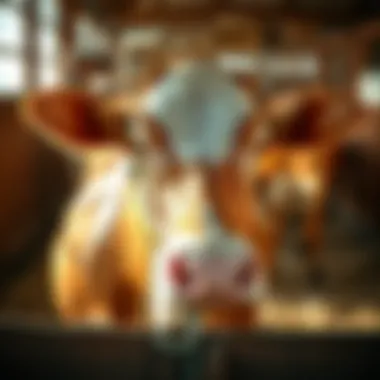
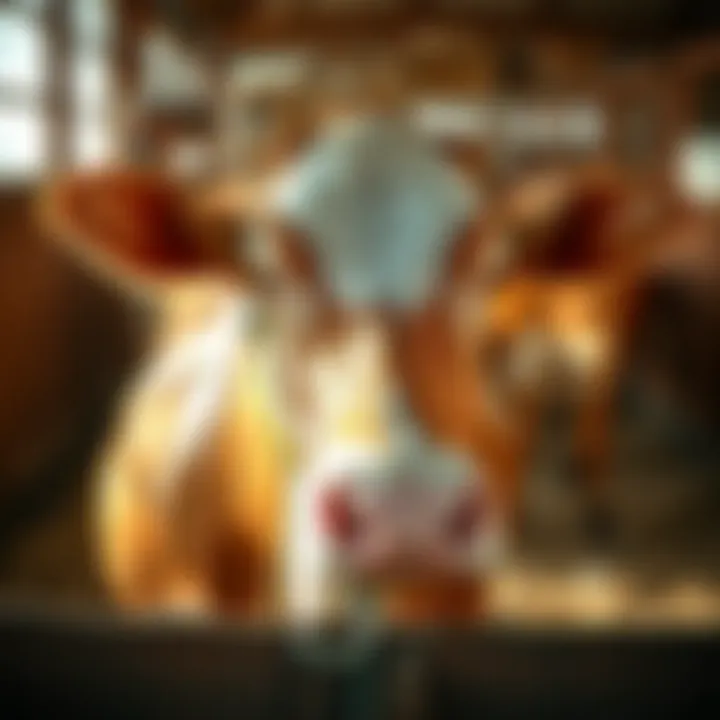
Intro
Lactose intolerance is a condition that affects a good number of individuals globally. For those who can’t digest lactose—a sugar present in milk and dairy products—this can often mean avoiding many beloved foods. But the dairy industry has adapted and evolved. Today, there is a burgeoning market for lactose-free dairy options. This article will explore the world of lactose-free dairy, highlighting its importance not just for those with lactose intolerance, but for nutrition and agricultural practices as well.
For many, enjoying a glass of milk or a scoop of ice cream isn’t just a treat; it’s a nostalgic memory tied to family and culture. However, this pleasure can be marred by discomfort and digestive issues. Understanding how lactose-free alternatives are produced and their place in our meals is increasingly relevant in our nutrition-conscious society.
While it might seem straightforward—substituting regular dairy with lactose-free options—there's a wealth of information about the nuances of lactose digestion, the farming practices behind dairy alternatives, and the shifting consumer trends in this field. In this comprehensive overview, we will delve deep into lactose-free dairy, aiming to equip farmers and dairy enthusiasts with knowledge and insights that could reshape their understanding of dairy in modern diets.
Let’s kick things off by defining essential concepts and terminology related to lactose-free dairy.
Intro to Lactose-Free Dairy
The realm of lactose-free dairy is not merely a response to a growing dietary niche; it is an essential element in nurturing the health and well-being of millions. Understanding lactose-free options means recognizing the significant barriers faced by those with lactose intolerance, a condition affecting vast populations around the globe. Embracing lactose-free dairy offers not only a solution to digestive distress but also a means to maintain nutritional balance for those who are affected.
For folks who cannot digest lactose, which is the sugar found in milk, typical dairy products can lead to uncomfortable symptoms such as bloating and stomach cramps. By introducing lactose-free dairy, we can create an inclusive dietary landscape that supports health without sacrificing taste or options. It's not just about eliminating discomfort; it is about redefining how we engage with dairy products in our daily lives.
This section sets the stage for a deeper conversation about how lactose-free dairy is produced, its nutritional benefits, and the market trends that underpin its rising popularity. It's crucial to understand that this category of food isn't merely a trend but rather a reflection of broader dietary shifts. With more consumers seeking alternatives that align with their health needs, the interest in lactose-free options has surged.
In the coming sections, we will delve deeply into understanding lactose intolerance, the history of dairy consumption, and how our collective approach to dairy is evolving. This exploration will provide invaluable insights not just for customers but also for farmers and producers looking to adapt to changing demands in the marketplace.
Understanding Lactose Intolerance
Lactose intolerance is a condition that occurs when individuals lack sufficient amounts of lactase, the enzyme needed to break down lactose. This inability can lead to various gastrointestinal issues when dairy products are consumed. Estimates suggest that about 65% of the world's population has some degree of lactose intolerance. While it's often perceived as a digestive inconvenience, understanding this condition is crucial for both dairy consumers and producers.
The symptoms associated with lactose intolerance can vary widely, but they often include:
- Bloating
- Diarrhea
- Gas
- Stomach cramps
Different cultures have varying levels of prevalence of lactose intolerance. For instance, many East Asian populations have a high prevalence, while Northern Europeans often have a lower incidence. This leads to differing dairy consumption patterns and preferences across the globe.
It’s important to note that lactose intolerance does not equate to a complete aversion to dairy. Many individuals with this condition can enjoy certain dairy products, particularly those that are lower in lactose, such as hard cheeses or yogurts, which can still deliver essential nutrients without triggering symptoms.
Historical Context of Dairy Consumption
The practice of consuming milk and dairy products has been around for thousands of years, deeply woven into the tapestry of human culture and diets. While exact dates are difficult to pinpoint, evidence suggests that dairy consumption began around 10,000 years ago when humans first domesticated cattle. Over centuries, different regions adopted dairy consumption according to their agricultural practices and climatic conditions.
In ancient times, communities that relied heavily on pastoralism benefited from dairy’s nutritional density. It provided essential nutrients like calcium, protein, and fats necessary for survival. However, not all cultures embraced dairy equally. Certain populations thrived on dairy while others developed lactose intolerance, showing a fascinating interplay between genetics and diet.
As societies evolved and migration patterns shifted, the perception of dairy transformed. For instance, in the Mediterranean and Middle Eastern regions, fermented dairy products became staples, providing a means to make milk safer for consumption. In contrast, cultures in the Far East developed a lesser reliance on dairy, finding alternative sources of nutrition.
This historical context enriches our understanding of why lactose-free options are essential today. With more people striving for inclusivity in dietary choices, a historical lens shows us why the demand for lactose-free dairy aligns with both cultural practices and modern nutritional needs.
The Science of Lactose
Understanding lactose is crucial as it lies at the heart of dairy consumption and the challenges faced by those who cannot digest it properly. Lactose is a sugar found primarily in milk, and for many, it poses a significant problem due to lactose intolerance. This section will explore what lactose is and how it is processed in the body, shedding light on the scientific elements that frame the discussion around lactose-free dairy products.
What is Lactose?
Lactose is a disaccharide, meaning it is composed of two monosaccharides: glucose and galactose. This sugar is naturally present in the milk of mammals. When we consume dairy, lactose needs to be broken down into its constituent sugars to be absorbed into the bloodstream. This breakdown process is facilitated by the enzyme lactase, which is produced in the small intestine.
However, not all individuals produce enough lactase post-infancy. This lack often leads to digestive issues, including bloating, gas, and diarrhea, when lactose-containing foods are consumed. It's essential to note that the severity of lactose intolerance varies; some individuals may tolerate small amounts of lactose, while others find even minimal quantities problematic. Understanding this variability helps in developing lactose-free dairy products that can accommodate a broader audience.
Processes of Lactose Digestion
The journey of lactose in the body begins when it enters the small intestine. Here, the enzyme lactase plays a pivotal role in digestion. If sufficient lactase is present, lactose is hydrolyzed—the process of adding water to split the molecule—into glucose and galactose, which can then be easily absorbed. This efficient action allows for energy supply and nutrient absorption.
"Lactose digestion, while straightforward for some, presents significant challenges for others—an important factor in developing lactose-free dairy products."
For those who lack adequate lactase, undigested lactose continues into the large intestine. Here, it ferments, leading to the production of gas and acids. This fermentation process triggers the uncomfortable symptoms associated with lactose intolerance.
Different individuals showcase varied capacities to digest lactose, contributing to the growing market for lactose-free products designed to ensure comfort and enjoyment without the adverse effects. Lactose-free options undergo various processes, such as adding lactase to the product or utilizing techniques like microfiltration, which helps remove or break down lactose while retaining the nutritional benefits associated with traditional dairy.
Culmination
Understanding the science behind lactose is not just an academic exercise but serves as a foundation for the development of tailored dairy products. This comprehension enables producers to create lactose-free options while still appealing to consumers who might otherwise shy away from dairy due to intolerances. As we navigate through the world of lactose-free dairy, we can appreciate the advancements in food science that help bridge the gap between nutrition and tolerance.


Lactose-Free Dairy Products: An Overview
Lactose-free dairy products play a significant role in catering to individuals with lactose intolerance, a condition that affects millions worldwide. Understanding the various types available not only allows those who have difficulties digesting lactose to enjoy their favorite dairy flavors but also broadens the horizon for food innovation in the dairy industry. This overview reveals the benefits and considerations behind lactose-free options, highlighting their rise in demand and importance in contemporary diets.
Types of Lactose-Free Dairy Products
Milk
Milk serves as the cornerstone of many diets. Lactose-free milk is produced by removing or breaking down lactose, mainly through the addition of lactase enzyme. This specific treatment allows people who are lactose intolerant to enjoy milk without the associated digestive upset. The creamy texture and rich flavor of lactose-free milk have made it a fan-favorite alternative, often comparable to regular milk in taste and usability.
Advantages include its nutritional profile, retaining calcium and vitamins similar to regular milk. However, lactose-free milk can be a bit pricier due to its production processes, presenting a consideration for consumers on a budget.
Yogurt
Yogurt stands out as an exemplary choice within lactose-free dairy products. It is often fermented with live bacteria, which breaks down much of the lactose present. This unique feature not only makes yogurt more digestible for those with lactose intolerance, but it also enhances its health benefits, being a significant source of probiotics. These beneficial bacteria promote gut health and support better digestion.
Yogurt's versatility also adds to its appeal, as it can be used in various dishes, from smoothies to salad dressings. However, consumers should pay attention to the sugar content in flavored variants, which can be higher than plain options.
Cheese
Cheese, particularly aged varieties like cheddar or parmesan, contains lower lactose levels and is often tolerated better by those with lactose intolerance. Lactose-free cheese, however, employs similar processes as lactose-free milk, ensuring that no lactose remains. Its robust and rich flavors make it a popular ingredient in cooking and snacking.
The advantage of cheese lies in its protein content, calcium, and good fats that can be included in a healthy diet. Nonetheless, not all cheeses are created equal, and some may have added ingredients like fillers or preservatives that consumers should scrutinize.
Cream
Lactose-free cream is another appealing addition to lactose-free dairy offerings. It maintains a smooth consistency and can be used in everything from coffee to gourmet sauces and desserts. The process usually involves treating regular cream through lactase enzyme, preserving its flavors while removing the lactose.
The creamy richness and delightful texture offer excellent culinary possibilities. However, it's worth noting that while lactose-free cream can be a substitute for non-dairy options, it still contains high fat content, which may necessitate mindful consumption.
How Lactose-Free Dairy is Made
Enzymatic Treatment
Enzymatic treatment is a primary method where the enzyme lactase is added to dairy products to break down lactose into glucose and galactose, sugars easier to digest. This method offers a straightforward solution for producing lactose-free products, retaining much of the original flavor and nutritional benefits. An advantage of this approach is that it allows manufacturers to keep dairy's distinct taste intact, appealing to a broad audience. However, not all brands follow strict quality regulations, so discerning consumers might face inconsistencies.
Microfiltration
Microfiltration is a technique that utilizes filters to physically separate lactose from dairy products. This process can be seen as an efficient way to achieve lactose-free products while maintaining a fresh flavor. Microfiltration often results in a creamier texture and longer shelf life, ideal for producers and consumers alike. However, its complexity and costs can add to the retail price, which might steer some consumers toward simpler options.
Fermentation
Fermentation is another method employed, especially in yogurt production. This process relies on beneficial bacteria that naturally consume lactose as part of their growth cycle. The result is a product that not only minimizes lactose but also carries additional health benefits due to the presence of probiotics. While fermentation represents a more natural approach, it is mainly utilized in yogurt and similar products, limiting broader applications in the lactose-free sector.
With the growth of lactose-free options, the dairy industry is adapting to meet consumer needs and preferences. This overview aims to clarify the varieties and production methods, aiding informed choices among lactose-free dairy products.
Nutritional Aspects of Lactose-Free Dairy
Understanding the nutritional aspects of lactose-free dairy is crucial not only for individuals with lactose intolerance but also for the larger conversation surrounding nutritional wellness. Lactose-free dairy products allow those who cannot digest lactose, a sugar found in milk, to still benefit from the rich nutrient profile that dairy offers. This section will delve into the comparative nutritional value of lactose-free dairy products, focusing on vitamins, minerals, protein content, and dietary considerations like digestion and allergenic potential.
Comparative Nutritional Value
Vitamins and Minerals
Lactose-free dairy products maintain a similar vitamin and mineral profile to their regular counterparts. Key vitamins such as A, D, B12, and riboflavin are often found in lactose-free milk, yogurt, and cheese. This makes it a solid choice for those looking to supplement their diets with essential nutrients.
One notable feature of lactose-free dairy is that the removal of lactose does not diminish the nutrient density. For instance, calcium, crucial for bone health, is retained, allowing consumers to acquire this essential mineral without the common side effects of lactose consumption.
The biological benefits extend beyond just vitamins; the presence of minerals like phosphorus also plays a vital part in enhancing metabolic functions. While some may argue that specific nutrients can be sourced elsewhere, the convenience and availability of lactose-free options make it a practical choice for those keeping an eye on their dietary requirements.
Protein Content
When it comes to protein, lactose-free dairy holds its ground admirably. The protein content remains largely unchanged, making it an ideal pick for individuals needing adequate protein for muscle development or overall health. Whey and casein, the primary proteins in milk, are also present in lactose-free variations, delivering all the essential amino acids necessary for bodily functions.
Despite common misconceptions that lactase-treated products might have different properties, consumers often find that lactose-free cheese and yogurt provide the same texture and flavor while offering comparable levels of protein to regular dairy. This allows athletes and active individuals to enjoy their favorites without any alterations to their nutrition plans.
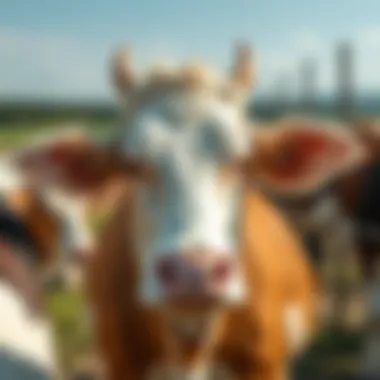
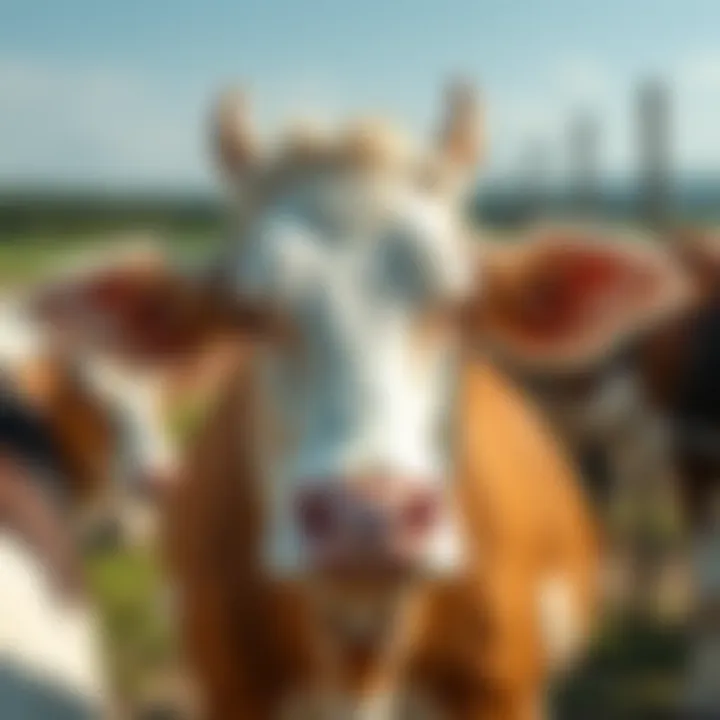
Dietary Considerations
Impact on Digestion
One of the most significant factors for lactose-free dairy is its positive impact on digestion. Traditional dairy, laden with lactose, poses challenges for those who have difficulty digesting it. Lactose-free products are treated with the enzyme lactase, which breaks down lactose into simpler sugars, making it easier for the body to absorb without the bloating or discomfort that commonly accompany lactose consumption.
This ease of digestion is a major draw for many consumers, as it not only alleviates symptoms but also improves nutrient absorption, thus optimizing one’s overall dietary intake. Additionally, the lack of gastrointestinal discomfort allows individuals to enjoy dairy without the looming anxiety over potential digestive issues.
Allergenic Potential
While lactose intolerance is common, other dairy-related allergies, such as milk protein allergies, present their own set of challenges. However, lactose-free products can sometimes offer a solution for certain individuals. The major proteins in milk, such as casein and whey, remain present, which means that those with true allergies should still tread carefully.
Nonetheless, lactose-free options may provide a chance for some who are intolerant, but not allergic, to enjoy dairy's nutritional benefits. This distinction is important as consumers navigate their dietary choices and explore what works best for their unique health circumstances.
Understanding these nutritional aspects ensures informed choices about lactose-free dairy, benefiting not just individuals with lactose intolerance but providing alternative options in diets focusing on nutrition and wellness.
In sum, the nutritional profile of lactose-free dairy products emphasizes the retention of essential vitamins, minerals, and protein while addressing digestion and allergens. With these considerations, it is clear why lactose-free dairy holds a significant place within the broader scope of dietary needs.
Market Trends and Consumer Demand
The exploration of lactose-free dairy products is not just a fleeting trend; it reflects a significant shift in consumer preferences and agricultural practices. For many, lactose intolerance has become a common condition, prompting a search for dairy alternatives that accommodate dietary needs without sacrificing taste or nutrition. The growing recognition of this condition has led to an increase in the demand for lactose-free products, ultimately shaping market trends. This section delves into essential elements shaping the lactose-free dairy market, highlighting consumer behaviors, preferences, and the implications they hold for future dairy production.
Growth of the Lactose-Free Market
The lactose-free dairy market has been experiencing robust growth over the last few years. As awareness about lactose intolerance increases, driven largely by health trends and greater nutritional education, more individuals are opting for lactose-free alternatives. In 2023, the global lactose-free market was estimated to be worth around $22 billion and is projected to reach close to $40 billion by 2030, showcasing a compound annual growth rate that cannot be overlooked.
Key factors fueling this growth include:
- Health Awareness: Consumers are more educated about lactose intolerance and its impact on health. Consequently, many seek out lactose-free options as a means to maintain their well-being while enjoying dairy products.
- Diverse Offerings: The range of lactose-free dairy products has expanded beyond just milk to include yogurt, cheese, and even ice cream, catering to various tastes and uses.
- Changing Lifestyles: The modern consumer values convenience and variety. Lactose-free products are often marketed as easy-to-digest and suitable for on-the-go consumption, appealing to busy lifestyles.
Consumer Preferences and Behaviors
Diving deeper into consumer behavior reveals a complex tapestry of preferences when it comes to lactose-free dairy. Studies have shown that taste, texture, and nutritional value are paramount in the decision-making process for many consumers. Lactose-free dairy is not only seen as a necessity but has also become a desirable choice for those who may not have lactose intolerance, but appreciate the benefits.
Common consumer behaviors observed in the lactose-free dairy sector include:
- Trial and Adoption: Many consumers begin their journey by experimenting with lactose-free alternatives, often prompted by friends or social media trends. Positive experiences frequently lead to continued purchase and loyalty.
- Label Awareness: Today’s consumers are savvier, with many scrutinizing labels for nutritional content and certifications. The presence of organic, non-GMO, and other health claims can significantly influence purchasing decisions.
- Sustainability Consciousness: There's an increasing focus on the environmental impact of food choices. Producers that embrace sustainable practices, such as eco-friendly farming and packaging, often resonate well with consumers looking to reduce their carbon footprint.
"The dairy landscape is no longer just about milk and cheese; it's about the choices consumers make to align with their health and lifestyle goals."
As trends evolve, the lactose-free dairy market will likely continue to adapt, emphasizing transparency and sustainability while meeting the demands of a growing, health-conscious population. Understanding these dynamics is crucial for farmers and producers, as they seek to innovate and cultivate products that cater to these shifting preferences.
Economic Impact of Lactose-Free Dairy
The economic landscape of lactose-free dairy is something that merits a closer look. The growing demand for lactose-free products has carved out a significant niche in the dairy industry, with implications for farmers, producers, and consumers alike. Understanding this topic can reveal how lactose-free dairy not only caters to those with lactose intolerance but also shapes agricultural practices and market trends.
Production Costs and Pricing Strategies
The production costs for lactose-free dairy products often differ from traditional dairy due to the added processes used to eliminate lactose. These processes include enzymatic treatment, which involves adding lactase enzymes to break down lactose into simpler sugars, making the dairy easier to digest for lactose-sensitive individuals.
As a result, the pricing strategies for lactose-free products reflect these additional costs. Producers often charge more for lactose-free items, which can be off-putting to some consumers. However, the increasing acceptance of lactose-free options has led to a competitive market.
There are several factors affecting pricing:
- Production Scale: Larger production batches can lower costs, but initially, smaller producers might struggle with economies of scale.
- Consumer Willingness to Pay: Many consumers place a premium on health and convenience, often willing to pay extra for lactose-free options; this supports growth despite higher costs.
- Ingredient Sourcing: Sourcing lactose-free ingredients can sometimes be more expensive, impacting overall production costs.
Pricing strategies also involve marketing approaches that emphasize the health benefits of lactose-free products. While some producers keep prices higher to maintain an exclusive image, others are rolling out budget-friendly options to expand their consumer base.
Market Accessibility for Producers
Market accessibility plays a crucial role in how lactose-free dairy products are positioned in the marketplace. With the dietary trends leaning more towards health consciousness, it’s no surprise that many dairy farms are pivoting to enter this lucrative sector.
However, several barriers can impede entry:
- Capital Investment: Converting or adapting existing facilities to accommodate lactose-free production can be a hefty initial cost.
- Regulatory Compliance: Producers must navigate complex safety and labeling regulations, which can be daunting and time-consuming.
- Consumer Education: Despite the rising popularity of lactose-free products, some consumers remain unaware of their benefits. Proper marketing and education campaigns are essential to improve accessibility and create a more informed customer base.
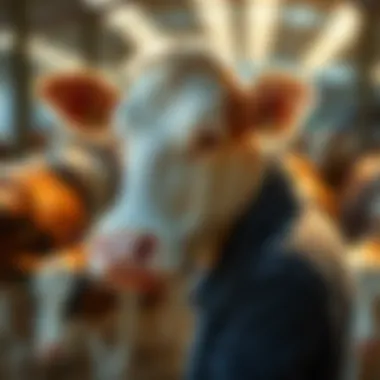
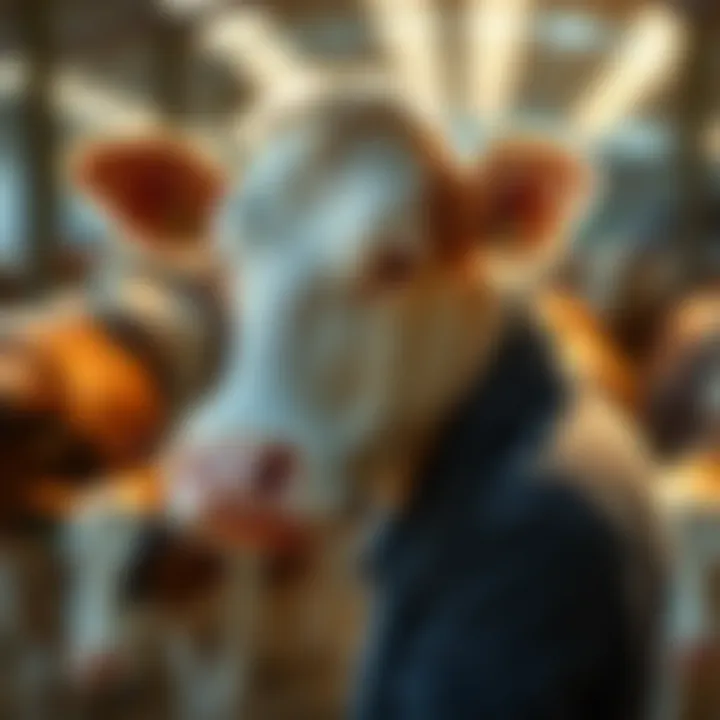
"The rise of lactose-free dairy products speaks volumes about the changing landscape of consumer preferences and the agricultural response to them."
For additional insights on market trends and agricultural economics, consider using resources from National Dairy FARM Program and U.S. Department of Agriculture.
Environmental Considerations in Lactose-Free Dairy Production
The environmental aspects of lactose-free dairy are not merely background details; they serve as fundamental pillars in discussions about sustainability and future farming practices. As lactose-free products gain traction in the market, understanding their environmental impact becomes crucial, especially for stakeholders in the agricultural sector. The push towards dairy without lactose isn't just about improving consumer health; it also involves addressing larger ecological concerns, from resource usage to greenhouse gas emissions.
Sustainability of Dairy Farming Practices
Sustainability in dairy farming practices aims to balance productivity with environmental health. With a growing focus on lactose-free dairy, farmers are reassessing their strategies.
- Crop Rotation: This helps maintain soil health while minimizing the need for chemical fertilizers, which can harm water quality.
- Waste Management: Implementing efficient waste recycling methods minimizes waste and often turns manure into valuable compost, enriching soils and reducing reliance on chemicals.
- Sustainable Feed: The choice of feed can drastically alter the environmental footprint. Organic feed options are being explored more, which not only support cow health but also reduce negative impacts on the environment.
Effective practices don’t only help in emissions reduction; they can lead to better animal health and productivity. When cows flourish in a healthy ecosystem, they contribute to a quality milk supply—even if it’s lactose-free.
Carbon Footprint of Lactose-Free Products
Understanding the carbon footprint associated with lactose-free products involves evaluating the entire lifecycle, from farm to consumer.
"Every step, from the cow's feed to the packaging, adds up."
- Farm Emissions: Livestock are significant contributors to methane emissions. Thus, adopting grazing practices that optimize land use can be beneficial.
- Production Process: Technologies that streamline lactose removal can affect energy consumption. For example, enzymatic treatments are becoming more efficient, minimizing energy costs per liter of lactose-free milk produced.
- Transportation and Packaging: The path to market is another critical factor. Environmentally friendly packaging and optimized logistics can reduce the carbon footprint significantly.
In summary, while lactose-free dairy products cater to dietary needs, their production has substantial environmental implications. The path towards sustainable growth requires continuous innovation and adherence to eco-friendly practices.
For more insights on sustainable dairy farming, you might check Wikipedia's entry on Dairy Farming or for community discussions, Reddit offers various threads on sustainability.
Future Directions in Dairy Without Lactose
As the understanding of lactose intolerance continues to evolve, there's a growing emphasis on the future of lactose-free dairy. This segment highlights the importance of focusing on future directions in lactose-free dairy, recognizing not only the current market trends but also the innovation needed to meet emerging consumer demands. The relevance of this topic becomes apparent as it not only caters to those who struggle with lactose intolerance but also opens the door for advancements in product development that can enhance overall nutrition.
Innovation in Product Development
Innovation is at the heart of transforming lactose-free dairy. With consumers searching for products that complement their health and dietary needs, companies are now exploring more sophisticated ways to produce these goods. One area of innovation lies in the extraction methods used to separate lactose from milk, with techniques becoming more efficient and environmentally sustainable.
Additionally, biotechnology is playing a pivotal role in developing lactose-free dairy. Genetically modifying certain strains of bacteria can lead to better fermentation processes, allowing for a richer taste and improved texture in lactose-free yogurts and cheeses. Moreover, other avenues such as blending plant-based alternatives with traditional dairy methods are gaining traction. This fusion could bring about a new wave of dairy products, appealing to not just those with lactose intolerances but also vegans and those seeking lower-fat options.
- Exploring new flavors: There’s also an increasing interest in flavoring lactose-free options. Combining lactose-free dairy with trending ingredients like matcha or spirulina not only caters to adventurous palettes but also enhances nutritional profiles.
The market for lactose-free cheese is ripe for innovation as well. Cheeses like mozzarella or feta, which traditionally rely on their lactose content for texture, are now getting a makeover. Companies are experimenting with enzyme additives that mimic the properties of lactose, improving melting characteristics and mouthfeel.
Potential Research Areas
The future isn't just about product development; it's also grounded in academia and research that could further shape the lactose-free dairy landscape. Identifying potential research areas can lead to breakthroughs that benefit both producers and consumers.
- Nutritional Impact Studies: It's imperative to conduct more comprehensive studies focused on the nutritional differences between lactose-free and regular dairy. This research can help clarify if certain processing methods might strip away essential nutrients, ensuring that lactose-free options remain a valuable component of the diet.
- Consumer Behaviour Analysis: Understanding what drives consumer adoption of lactose-free dairy products is crucial. Are tastes and preferences shifting towards cleaner labels? Researching these trends can guide marketing strategies and help tailor products that meet consumer expectations more precisely.
- Sustainable Practices Research: With the environmental footprint of dairy production being a hot topic, studies focusing on the carbon footprint of lactose-free dairy alternatives compared to traditional methods can provide invaluable insights. Are lactose-free methods more sustainable? What practices can be optimized?
- Allergen Studies: Exploring the potential for lactose-free products to also cater to other dietary restrictions is another promising area of focus. For instance, how each processing method impacts the allergenic potential of proteins in dairy relative to lactose can guide safer consumption for those with broader food sensitivities.
As we head further into the 21st century, lactose-free dairy holds a promising future. The interplay of innovation and research can enrich the market and provide options that appeal to a broader audience, while also catering to nutritional needs and sustainability considerations.
The bottom line: Embracing innovation and undertaking serious research in lactose-free dairy will not just benefit those with lactose intolerance but can reshape the entire dairy industry positively, paving the way for a more inclusive approach to dairy products, regardless of dietary restrictions.
For more detailed information on lactose-free dairy science and innovations, you may refer to Wikipedia and Britannica.
End
The exploration of lactose-free dairy represents a significant stride not just for those grappling with lactose intolerance but for the entire agriculture sector and consumer culture. Understanding the implications of lactose-free options extends beyond mere dietary preferences; it’s about embracing the evolving landscape of nutrition and the necessity of inclusive agricultural practices. The shift towards these alternatives is not simply a trend; it indicates a deeper awareness around health, sustainability, and the future of food production.
Summary of Key Insights
Various factors underscore the importance of lactose-free dairy products in today’s market. They cater to a sizable population living with lactose intolerance, as well as serve those who prefer alternatives for better digestive health. Studies show that incorporating lactose-free products can ease gastrointestinal distress while still providing essential nutrients found in traditional dairy.
Moreover, innovations in the lactose-free production processes, utilizing methods like enzymatic treatment and fermentation, present exciting opportunities for food scientists. These advancements not only elevate nutritional quality but also pursue sustainable farming methodologies, thus reflecting changing consumer responsibilities toward the environment. The widespread acceptance of lactose-free dairy hints at stronger consumer agility when it comes to health-conscious choices.
Implications for Future Consumption
As we look ahead, the implications for future consumption of lactose-free dairy are abundant. The demand for these products is likely to increase, influenced by growing awareness of issues surrounding lactose intolerance. More importantly, this growth might pressure dairy suppliers to adopt eco-friendly practices to meet consumer expectations.
The potential for new product development is vast. With the rising popularity of plant-based and lactose-free alternatives, there remains an opportunity for dairy farmers to diversify their offerings while maintaining traditional practices. It might also give rise to a new niche market focusing on artisanal lactose-free cheeses and yogurts, which could cater to a burgeoning segment looking for high-quality, unique flavors that align with dietary preferences.
Embracing lactose-free dairy doesn’t just lead to individual health benefits; it transforms our approach to food systems and dictates future agricultural practices. An informed consumer base will likely shape the landscape, driven by preferences that intertwine well-being, taste, and environmental consciousness. This evolving dialogue between consumer demands and dairy production practices will ultimately define the next chapter in dairy consumption.







